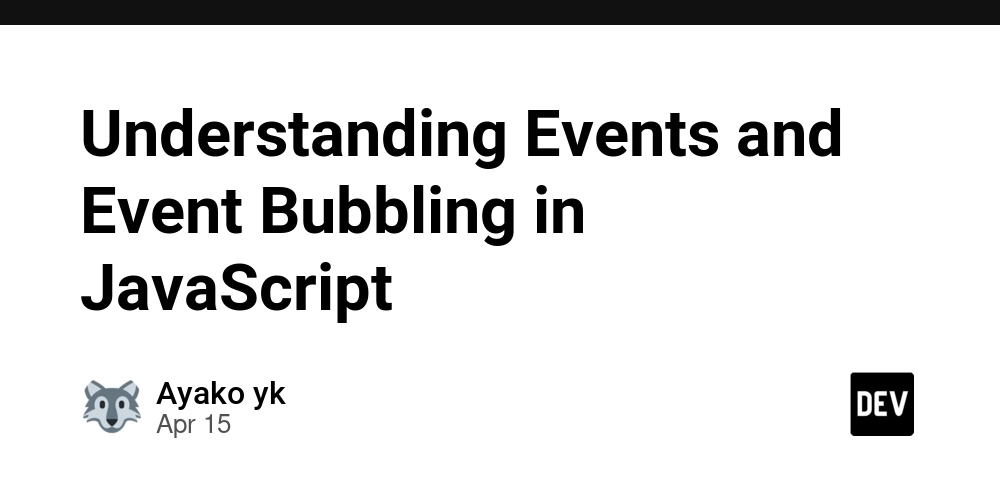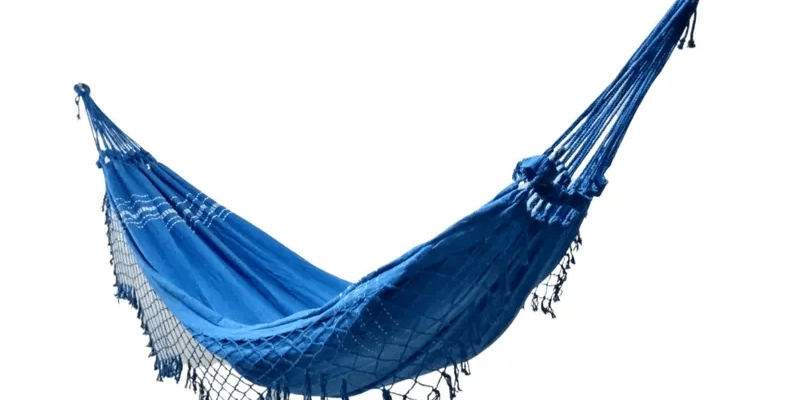Understanding Events and Event Bubbling in JavaScript
What are Events and Event Handlers? Events are signals triggered by actions, such as a user clicking a button, pressing keys, or a page finishing loading. To define how the browser should respond to these signals, we use event handlers --- blocks of code that execute when the events occur. addEventListener() addEventListener is the recommended method for event handlers. const btn = document.querySelector("button"); btn.addEventListener("click", () => { document.body.style.backgroundColor = "blue"; }); MDN (This example is from MDN but has been simplified.) Event Objects When an event occurs, an event object is created and automatically passed to the event handler. This object provides extra features and information about the event. It is commonly written as e, evt, or event. event.target A reference to the object to which the event was originally dispatched. event.currentTarget [A reference to] the element to which the event handler has been attached. Event Bubbling When we include a delete icon with an SVG, we often surround it with a and add an event handler to it for semantic and accessibility reasons. However, clicking directly on the icon still works perfectly due to the event bubbling. In this code snippet, the is a parent element, and the is its child element. When we add an event handler (handleClick) to the parent and click the button, the event handler is still triggered because the event bubbles up from the child to the parent . Click me! const container = document.querySelector("#container"); function handleClick(e) { console.log("Container clicked"); } container.addEventListener("click", handleClick); event.target and event.currentTarget Click me! const output1 = document.querySelector("#output1"); const output2 = document.querySelector("#output2"); function handleClick(e) { output1.textContent += `You clicked on a ${e.target.tagName} element\n`; output2.textContent += `You clicked on a ${e.currentTarget.tagName} element\n`; } const container = document.querySelector("#container"); container.addEventListener("click", handleClick); MDN (These examples are from MDN but have been modified.) When an event occurs on an element, it first runs on the element itself and then bubbles up to its parent elements (or ancestors). What happens if parent elements also have event handlers? FORM DIV P If we click on the innermost child "P", the alerts will be shown in the order of p, div, and form. The event propagates upward through the DOM hierarchy, triggering event handlers attached to each ancestor. The Modern JavaScript tutorial Stop Propagation Event bubbling is useful, as discussed above, but it can sometimes cause unintended behavior. To prevent this, we can use the stopPropagation() method. FORM DIV P const form = document.querySelector("form"); const div = document.querySelector("div"); const p = document.querySelector("p"); form.addEventListener("click", () => alert("form")); div.addEventListener("click", () => alert("div")); p.addEventListener("click", (event) => { event.stopPropagation(); alert("p"); } ); Now, clicking on "P" only triggers the alert 'p', and no alerts from its parent elements are shown. Event bubbling can be incredibly useful when used properly. It becomes more powerful when combined with event delegation and the event.target property. I'll explore these concepts in my next blog.

What are Events and Event Handlers?
Events are signals triggered by actions, such as a user clicking a button, pressing keys, or a page finishing loading. To define how the browser should respond to these signals, we use event handlers --- blocks of code that execute when the events occur.
addEventListener()
addEventListener is the recommended method for event handlers.
const btn = document.querySelector("button");
btn.addEventListener("click", () => {
document.body.style.backgroundColor = "blue";
});
MDN
(This example is from MDN but has been simplified.)
Event Objects
When an event occurs, an event object is created and automatically passed to the event handler. This object provides extra features and information about the event. It is commonly written as e, evt, or event.
event.target
A reference to the object to which the event was originally dispatched.
event.currentTarget
[A reference to] the element to which the event handler has been attached.
Event Bubbling
When we include a delete icon with an SVG, we often surround it with a and add an event handler to it for semantic and accessibility reasons. However, clicking directly on the icon still works perfectly due to the event bubbling.
In this code snippet, the event.target and event.currentTarget MDN When an event occurs on an element, it first runs on the element itself and then bubbles up to its parent elements (or ancestors). If we click on the innermost child "P", the alerts will be shown in the order of p, div, and form. The event propagates upward through the DOM hierarchy, triggering event handlers attached to each ancestor.
The Modern JavaScript tutorial
Stop Propagation Now, clicking on "P" only triggers the alert 'p', and no alerts from its parent elements are shown.
Event bubbling can be incredibly useful when used properly. It becomes more powerful when combined with event delegation and the is its child element. When we add an event handler (handleClick) to the parent to the parent
(These examples are from MDN but have been modified.)
What happens if parent elements also have event handlers?
Event bubbling is useful, as discussed above, but it can sometimes cause unintended behavior. To prevent this, we can use the stopPropagation() method.
event.target property. I'll explore these concepts in my next blog.










































































































































































![[The AI Show Episode 144]: ChatGPT’s New Memory, Shopify CEO’s Leaked “AI First” Memo, Google Cloud Next Releases, o3 and o4-mini Coming Soon & Llama 4’s Rocky Launch](https://www.marketingaiinstitute.com/hubfs/ep%20144%20cover.png)


















































































































![[DEALS] The All-in-One Microsoft Office Pro 2019 for Windows: Lifetime License + Windows 11 Pro Bundle (89% off) & Other Deals Up To 98% Off](https://www.javacodegeeks.com/wp-content/uploads/2012/12/jcg-logo.jpg)





































![Is this too much for a modular monolith system? [closed]](https://i.sstatic.net/pYL1nsfg.png)






















































































































_Andreas_Prott_Alamy.jpg?width=1280&auto=webp&quality=80&disable=upscale#)
































































































![What features do you get with Gemini Advanced? [April 2025]](https://i0.wp.com/9to5google.com/wp-content/uploads/sites/4/2024/02/gemini-advanced-cover.jpg?resize=1200%2C628&quality=82&strip=all&ssl=1)













![Apple Shares Official Trailer for 'Long Way Home' Starring Ewan McGregor and Charley Boorman [Video]](https://www.iclarified.com/images/news/97069/97069/97069-640.jpg)
![Apple Watch Series 10 Back On Sale for $299! [Lowest Price Ever]](https://www.iclarified.com/images/news/96657/96657/96657-640.jpg)
![EU Postpones Apple App Store Fines Amid Tariff Negotiations [Report]](https://www.iclarified.com/images/news/97068/97068/97068-640.jpg)
![Apple Slips to Fifth in China's Smartphone Market with 9% Decline [Report]](https://www.iclarified.com/images/news/97065/97065/97065-640.jpg)




































































































































